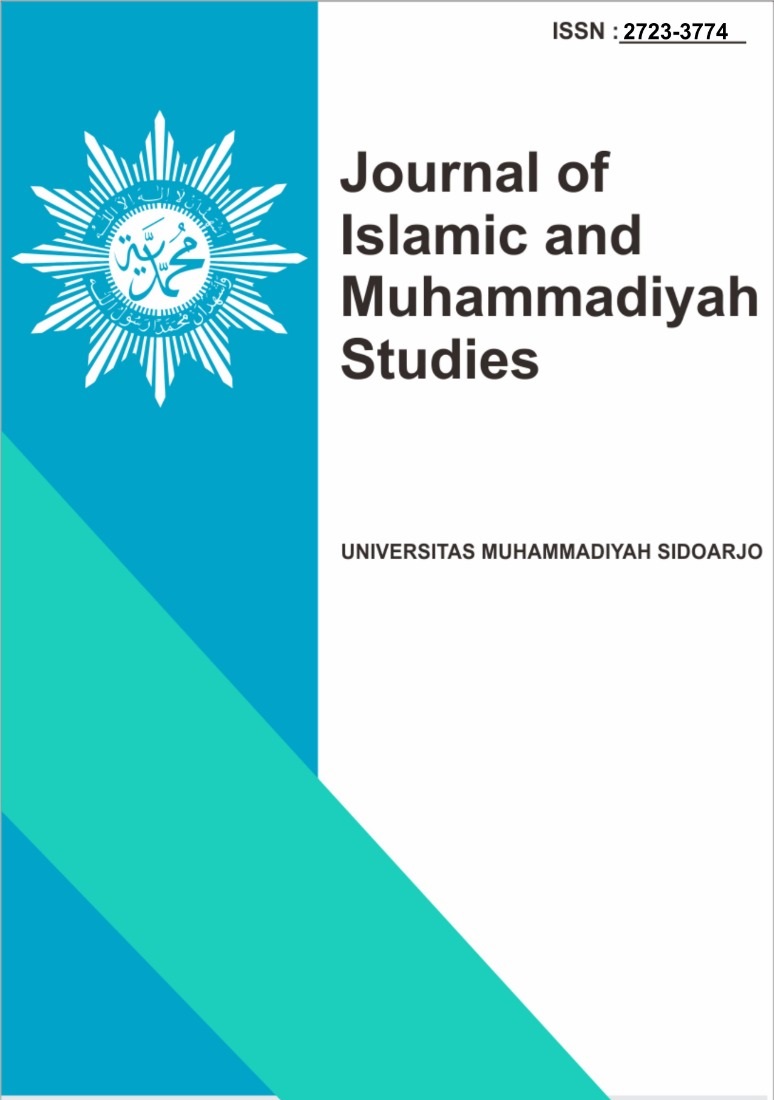Integrative Islamic Learning Shapes Students’ Religious Attitudes in Social Studies
Pembelajaran Islam Terpadu Mempengaruhi Sikap Keagamaan Siswa dalam Mata Pelajaran Ilmu Sosial
DOI:
https://doi.org/10.21070/jims.v7i2.1648Keywords:
Islamic Values, Integrative Learning, Social Studies, Religious Attitudes, Primary EducationAbstract
General Background: Developing students’ religious attitudes is a crucial aspect of character education in primary schools, particularly in the context of Social Studies learning. Specific Background: Integrative learning based on Islamic values offers opportunities to incorporate moral and spiritual dimensions alongside cognitive and psychomotor skills. Knowledge Gap: However, limited studies examine how such integrative approaches manifest in improving students’ daily religious practices and attitudes. Aims: This study investigates how integrative Islamic-based learning in Social Studies shapes the religious attitudes of fourth-grade students. Results: Findings indicate that students exposed to integrative learning demonstrate significant improvements in cognitive understanding, affective disposition, psychomotor engagement, and the practical application of religious values in daily life. Novelty: This study highlights a comprehensive framework linking Islamic values to multiple learning domains, providing evidence beyond conventional moral education approaches. Implications: The findings suggest that embedding spiritual and moral elements within standard curricular subjects can foster holistic development, guiding educators in designing value-oriented learning activities that influence both classroom behavior and everyday practices.
Highlights:
-
Integrative learning promotes holistic development across cognitive, affective, and psychomotor domains.
-
Practical application of religious values in daily life is enhanced.
-
Provides a model for embedding moral-spiritual education within standard subjects.
Keywords: Islamic Values, Integrative Learning, Social Studies, Religious Attitudes, Primary Education
References
Herawati, H. (2016). Pendidikan inklusif: Konsep dan implementasinya di sekolah. Jakarta: Kencana.
Sanjaya, S. (2009). Strategi pembelajaran berorientasi standar proses pendidikan. Jakarta: Kencana.
Sugiyono. (2019). Metode penelitian kuantitatif, kualitatif, dan R&D. Bandung: Alfabeta.
Sugiyono. (2014). Metode penelitian kombinasi (Mixed Methods) (p. 83). Bandung: Alfabeta.
Miles, M. B., & Huberman, A. M. (1994). Qualitative data analysis: An expanded sourcebook (2nd ed., p. 16). Thousand Oaks, CA: Sage Publications.
Sugiyono. (2013). Metode penelitian kualitatif, kuantitatif, dan R&D. Bandung: Alfabeta.
Sweller, J. (1994). Cognitive load during problem solving: Effects on learning. Cognitive Science, 12(2), 257–285. https://doi.org/10.1016/0364-0213(94)90003-5
Sigafoos, J., O’Reilly, M., & de la Cruz, B. (2007). PRO–ED Series on Autism Spectrum Disorders: How to Use Video Modeling and Video Prompting. Austin, TX: PRO-ED.
Weimer, M. (2013). Learner-centered teaching: Five key changes to practice (2nd ed.). San Francisco, CA: Jossey-Bass.
Beukelman, D. R., & Mirenda, P. (2013). Augmentative and alternative communication: Supporting children and adults with complex communication needs (4th ed.). Baltimore, MD: Paul H. Brookes.
Black, P., & Wiliam, D. (2009). Developing the theory of formative assessment. Educational Assessment, Evaluation and Accountability, 21(5), 5–31. https://doi.org/10.1007/s11092-008-9068-5
Slavin, R. E. (2015). Cooperative learning: Theory, research, and practice (2nd ed.). Boston, MA: Allyn & Bacon.
Carter, E. W., Cushing, L. S., Clark, N. M., & Kennedy, C. H. (2005). Effects of peer support interventions on students’ access to the general curriculum and social interactions. Research and Practice for Persons with Severe Disabilities, 30(1), 15–25. https://doi.org/10.2511/rpsd.30.1.15
Schramm, W. (1954). How communication works. In The process and effects of mass communication (pp. 3–26). Urbana, IL: University of Illinois Press.
Moreno, R., & Mayer, R. E. (2007). Interactive multimodal learning environments. Educational Psychology Review, 19(3), 309–326. https://doi.org/10.1007/s10648-007-9047-2
Johnson, E. B. (2002). Contextual teaching and learning: What it is and why it’s here to stay. Thousand Oaks, CA: Corwin Press.
Schunk, D. H., & Zimmerman, B. J. (1998). Self-regulated learning: From teaching to self-reflective practice. New York, NY: Guilford Press.
Vygotsky, L. S. (1978). Mind in society: The development of higher psychological processes. Cambridge, MA: Harvard University Press.
Skinner, B. F. (1953). Science and human behavior. New York, NY: Macmillan.
Freiberg, H. J., & Stein, T. (1999). Measuring, improving, and sustaining healthy learning environments. London: Routledge.
Booth, T., & Ainscow, M. (2011). Index for inclusion: Developing learning and participation in schools (3rd ed.). Bristol, UK: CSIE.
Hewett, F. M., & Forness, S. R. (1996). The resource room: An outdated model. Journal of Learning Disabilities, 29(4), 432–438. https://doi.org/10.1177/002221949602900405
Tomlinson, C. A. (2014). The differentiated classroom: Responding to the needs of all learners (2nd ed.). Alexandria, VA: ASCD.
UNESCO. (2017). A guide for ensuring inclusion and equity in education. Paris: UNESCO Publishing.
Robinson, K. (2011). Out of our minds: Learning to be creative. Oxford, UK: Capstone.
Joyce, B., Weil, M., & Calhoun, E. (2015). Models of teaching (9th ed.). Boston, MA: Pearson.
Meyer, A., Rose, D. H., & Gordon, D. (2014). Universal design for learning: Theory and practice. Wakefield, MA: CAST Professional Publishing.
Lickona, T. (1991). Educating for character: How our schools can teach respect and responsibility. New York, NY: Bantam Books.
Downloads
Published
How to Cite
Issue
Section
License
Copyright (c) 2025 Risha Agustina Widianata, Mahardika Darmawan Kusuma Wardana

This work is licensed under a Creative Commons Attribution 4.0 International License.
Authors retain copyright and grant the journal right of first publication with the work simultaneously licensed under a Creative Commons Attribution 4.0 International License that allows others to share the work with an acknowledgement of the work's authorship and initial publication in this journal.






